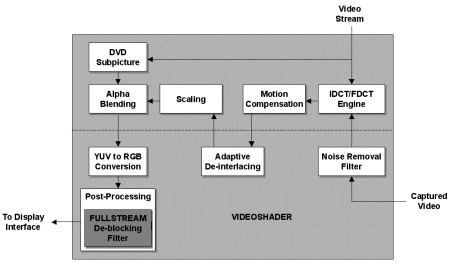ATi Takes Over 3D Technology Leadership With Radeon 9700
Smoothvision 2.0 - Anisotropic Filtering
Anisotropic filtering is a special filtering technique that greatly improves the quality of textures on surfaces that are under a larger angle to the viewer (e.g., like walls along a corridor that we look down). The reason why neither bilinear nor trilinear texture filtering does a good job here is because the actual pixel covers a larger part of the texture than the four or eight texel samples that are used to define the pixel color in the above mentioned filtering techniques. Anisotropic filtering takes up to 16 bilinear or trilinear samples along the slope of the surface to define the color of the pixel.
We know that ATi's implementation of anisotropic filtering for Radeon 8500 is running a lot faster than NVIDIA's implementation on GeForce4 Ti. NVIDIA complains that ATi is only taking bilinear samples, while NVIDIA uses trilinear texture samples, which costs twice the memory bandwidth. The new anisotropic filtering found in Radeon 9700 has a 'performance' setting that uses bilinear samples and a new 'quality' setting that uses trilinear samples. This should satisfy NVIDIA as well as every future Radeon 9700 owner.
ATi Video Shader
The new programmability of the pixel shaders allows their usage in the video processing engine of Radeon 9700. Several tasks of the video decoding process can be done by the pixel shaders. ATi calls this new technology Videoshader.

Videoshader allows Radeon 9700 cards to do without a special video chip.
ATi demonstrated how 'Videoshader' is able to de-block a streamed low-bandwidth video in real time, or how certain effects can be applied to a video signal, such as blurring, embossing or outlining.
Stay on the Cutting Edge
Join the experts who read Tom's Hardware for the inside track on enthusiast PC tech news — and have for over 25 years. We'll send breaking news and in-depth reviews of CPUs, GPUs, AI, maker hardware and more straight to your inbox.
Current page: Smoothvision 2.0 - Anisotropic Filtering
Prev Page Smoothvision 2.0 - FSAA Next Page Display OutputMost Popular

